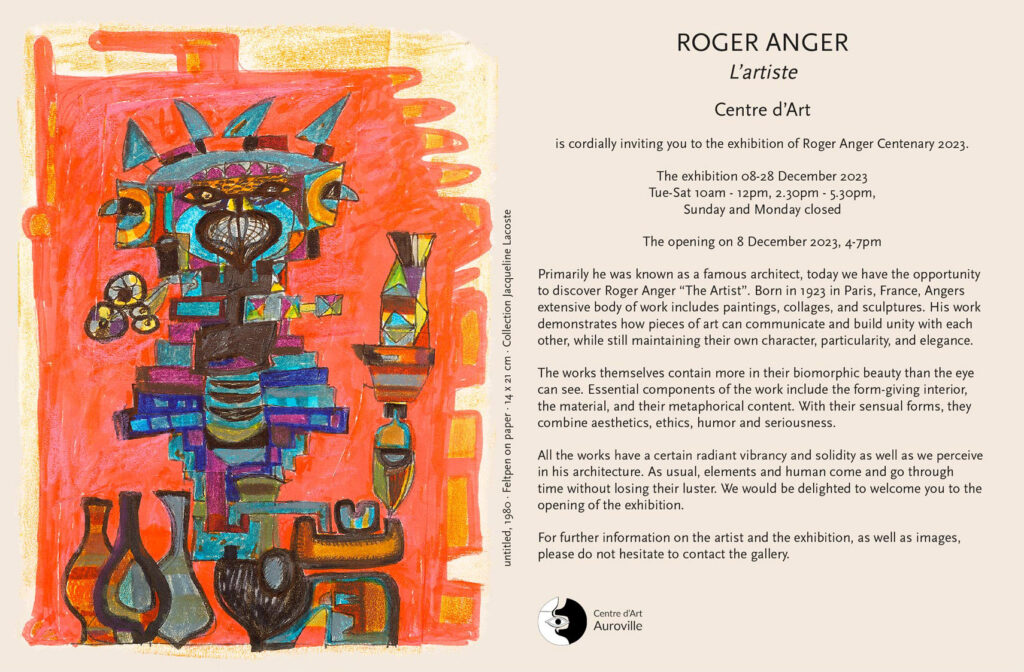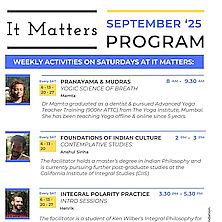
Roger Anger, the artist by Dominique Jacques
Roger Anger, the artist is the first ever exhibition of the work of an artist who, by the age of 40, had won several prestigious architectural prizes, but who never exhibited his paintings or sculptures during his lifetime.
The Auroville Centre d’Art presents today a collection of previously unseen drawings, collages and sculptures to mark the centenary of Roger Anger’s birth.
These works convey the image of a versatile and all-embracing artist, pursuing his own ideal of beauty. An artist and a man in constant search, driven by a profound inner need.
A lover of arts from the four corners of the world, Roger was in touch with the innovative effervescence of revolutionary European movements. Following in the footsteps of artists who were at once painters, sculptors, architects, engineers and stage directors such as Calder and Tinguely, Dubuffet and Manrique, he wanted to try and explore absolutely everything.
He didn’t yet know what challenge would be waiting for him in the India he loved so much, and in which he had already been travelling for several years. The project to build Auroville would shake up his life. His ideas and experiences would never be the same again.
His approach to art is joyful, humorous and tireless. In his vision of the physical world, all phenomena are linked, and the connections between their different manifestations are boundless.
He drew everywhere, on scraps of paper and envelopes, and had his sketches cut out and pasted onto sheets of paper to make a kind of notebook that he would rework on once again. He was profoundly interested in the relationships between shapes, materials and colours, opacity and transparency, and the energy flowing from juxtapositions.
It was in Auroville in 1996, when work on the Matrimandir slowed down, that he once again had the opportunity to immerse himself in his own art.
The collages and sculptures on display today were created in his studio during this period. The collages evoke small abstract universes, landscapes that speak to the unconscious, three-dimensional dreams with Aztec reminiscences and science-fiction overtones that tell us that time does not exist.
During the same period, he was also building small-scale sculptures in polystyrene that would later be made into large-scale works in aluminium, bronze and cement.
It was then that he definitively freed himself from anthropomorphism to create these sinuous figures that are so perplexing to the eye that one might almost think that the sculpture is in the vacuum chiselled around the form, as much as in the form itself; like beings in a state of transition, whose essence allows them to exist from the visible to the invisible, caught between two worlds in their momentum towards a state yet to be defined.
We are inclined to think that it was Auroville that enabled him to achieve such a level of freedom and creation. His works take us to the brink of mystery, giving us a glimpse of the dream of a transformed future, like a promise within reach, a transcended impossibility.
Dominique Jacques – November 2023



